Corrosion
Some interesting images of corrosion noted during recent surveys. Seawater is a very corrosive medium and illustrated very clearly in the following images. All the following vessels were presented for sale and the owners were not aware of the corrosion!
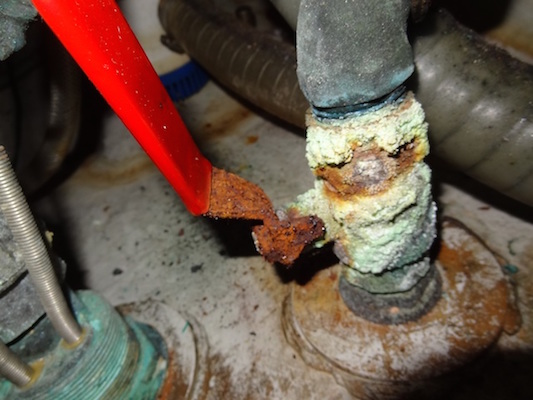
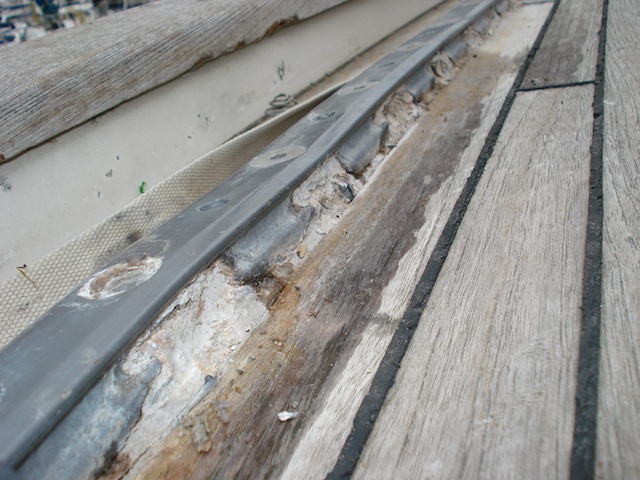
Extreme case of corrosion of an aluminium genoa track (and stainless steel bolts) and the impact on the underlying teak deck.
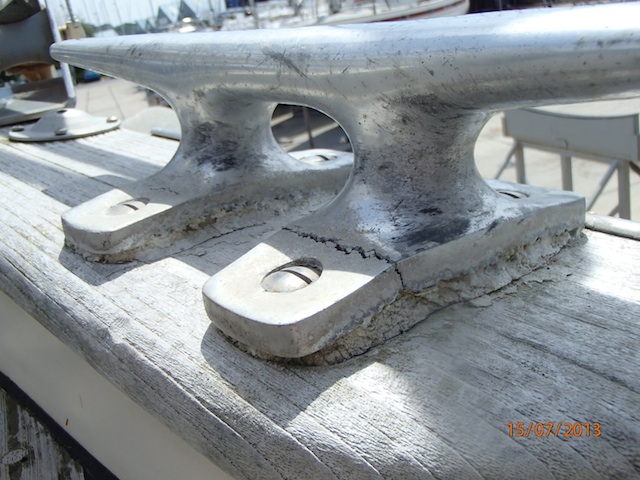
This is a very good example of corrosion under a mooring cleat lifting the teak hydraulically so snapping the cleat foot and damaging the underlying teak.
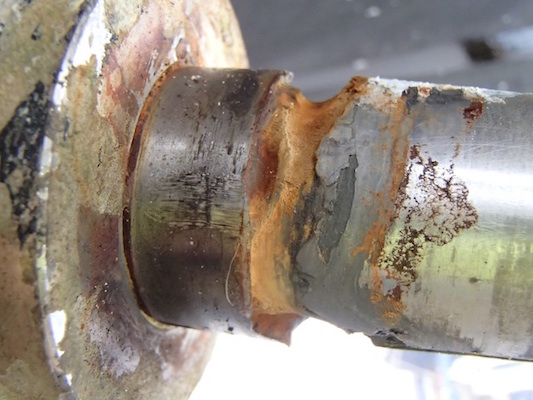
This is extreme and rare, but recently noted on a shaft just forward of the propeller. This is crevice corrosion at its worst.
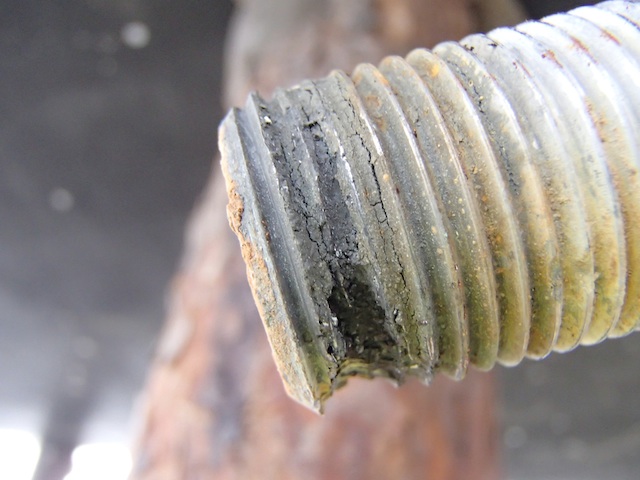
This is crevice corrosion on the threaded end of a propeller shaft. I condemned this shaft following the survey.
Corrosion is well understood and can be well managed, sadly many vessels due to a lack of maintenance suffer badly from corrosion wi=hich can be expensive. Be proactive and note the following:-
1. Wash your vessel after use with freash water paying attention to the deck fittings, inside the chain locker and the rig at deck level.
2. Operate and annually service your seacocks. Regular cleaning with a wire brush and operating the seacock itself is essential. Try coating the seacock valve with vaseline, this can prevent corrosion.
3. Have your rig checked aloft annually, corrosion about stainless steel fittings is common and easily managed, unless ignored.
4. During your vessel's time ashore each year always remove your propeller to check for crevice corrosion.
5. Maintain your anodes and check that the bonding cables between the anodes and say a P-Bracket are sound.
If you need advice please contact Julian at Hamble Marine Surveys.